1.What are custom logo tents?
Custom logo tents are outdoor shelters that are personalized with a company or organization’s logo, branding elements, and other customized features. These tents are commonly used for promotional events, trade shows, fairs, festivals, outdoor markets, and other occasions where a branded presence is desired.
Key features of custom logo tents include:
Branding: The primary purpose of these tents is to promote a specific brand. They typically display the company’s logo, slogan, and other relevant branding elements.
Customization: Customers can customize various aspects of the tent, including colors, graphics, and text. This allows for a unique and tailored appearance that aligns with the brand identity.
Materials: Custom logo tents are constructed from durable materials to withstand outdoor conditions. Common materials include polyester or vinyl for the canopy and aluminum or steel for the frame.
Portability: Many custom logo tents are designed to be portable, allowing for easy setup and takedown. They often come with a carrying case for convenient transportation.
Sizes: These tents come in different sizes to accommodate various event spaces and requirements. Common sizes include 10×10 feet and 10×20 feet, but larger options are also available.
Versatility: While commonly used for outdoor events, custom logo tents can also be used indoors. This versatility makes them suitable for a wide range of promotional activities.
Water Resistance: Depending on the specific design and materials, custom logo tents may be water-resistant or waterproof, providing protection in various weather conditions.
Durability: The durability of these tents depends on the quality of materials used in their construction. High-quality materials and sturdy frames contribute to a longer lifespan.
Overall, custom logo tents serve as effective marketing tools, creating a visible and branded presence for businesses and organizations at events and gatherings. They offer a professional and cohesive way to showcase a brand while providing shelter and visibility in various settings.
2.Is there any difference between online canopy on sale and physical store canopy on sale?
Yes, there can be differences between online canopy sales and sales in physical stores. Here are some key distinctions:
Availability of Exclusive Deals:
- Online and physical stores may offer exclusive deals or promotions to attract customers to their respective platforms. Some discounts or bundles may be available only online or only in-store.
Product Selection:
- The range of canopy products available during a sale may vary between online and physical stores. Online platforms may have a broader selection due to the ease of displaying a larger inventory, while physical stores may focus on specific models.
Convenience and Accessibility:
- Online sales provide the convenience of shopping from anywhere, at any time. Physical stores require customers to visit the location during business hours. This convenience factor can influence a buyer’s decision.
Shipping and Handling:
- Online purchases typically involve shipping, and additional costs may apply. In contrast, physical stores allow customers to take the canopy with them immediately. Consideration of shipping costs and delivery times may impact the decision-making process.
Inspection and Touch-and-Feel Experience:
- Physical stores offer the advantage of allowing customers to physically inspect the canopies, assess their quality, and experience the materials. This hands-on experience may influence the buyer’s confidence in the product.
In-Person Assistance:
- Physical stores provide face-to-face assistance from store staff. Customers can ask questions, seek recommendations, and get immediate assistance. Online platforms often offer customer support, but it may be through digital channels.
Return and Exchange Process:
- The return and exchange process may differ between online and physical store purchases. Online returns usually involve shipping the item back, while physical stores may have a quicker in-person return process.
Exclusive In-Store Events:
- Some physical stores may host exclusive in-store events or promotions during sales. This can include live demonstrations, expert advice, or additional perks for in-person shoppers.
Price Matching Policies:
- Some retailers have policies for price matching, either online or in-store. It’s advisable to check the store’s policies to see if they honor online prices in their physical locations or vice versa.
Payment Options:
- Online platforms may offer a variety of digital payment options, while physical stores may accept both digital and traditional payment methods. Consider the preferred payment method when choosing between online and in-store purchases.
It’s important for consumers to consider their preferences, needs, and the advantages of each purchasing channel when deciding between an online or in-store canopy sale. Additionally, checking the specific policies and terms of the retailer for each channel is recommended to make an informed decision.
3.How do you put a logo on a logo tents?
Putting a logo on a custom tent involves a straightforward process. Here are general steps to guide you:
Choose a Reputable Provider:
- Start by choosing a reputable custom tent provider. Look for companies that specialize in manufacturing and customizing tents for promotional and branding purposes.
Select the Tent Type and Size:
- Choose the type of tent that suits your needs, whether it’s a pop-up canopy, event tent, or another style. Select the appropriate size based on the space requirements for your events.
Design Your Logo:
- Ensure you have a high-quality version of your logo in a suitable digital format. Vector formats like EPS or AI are preferable for maintaining quality and scalability.
Check Branding Guidelines:
- Review the branding guidelines provided by the tent provider. This includes specifications for logo size, color options, and any other customization details. Adhering to these guidelines ensures a seamless integration of your logo onto the tent.
Use Online Design Tools (if available):
- Many custom tent providers offer online design tools on their websites. These tools allow you to upload your logo, choose colors, add text, and visualize how the finished product will look. Follow the platform’s instructions to customize your tent.
Work with Design Professionals (if needed):
- If you’re not comfortable using online design tools or have complex design requirements, consider working with the design professionals provided by the tent manufacturer. They can assist you in creating a custom design that aligns with your branding goals.
Approve the Design:
- Once you’ve finalized the design, carefully review and approve it. Ensure that all details, including logo placement, colors, and text, meet your expectations and adhere to branding standards.
Place Your Order:
- Proceed to place your order with the approved design. Provide any necessary details, such as quantity, shipping information, and payment.
Production and Printing:
- The custom tent provider will proceed with the production and printing of your logo on the tent material. This may involve various printing techniques, such as dye-sublimation or screen printing.
Receive and Set Up Your Custom Logo Tent:
- Once the custom tent is ready, it will be shipped to your location. Follow the provided instructions to set up your tent, ensuring that your branded elements are prominently displayed.
Remember to communicate clearly with the tent provider, follow their guidelines, and double-check the design before finalizing your order. Each provider may have slightly different processes, so it’s essential to familiarize yourself with their specific requirements.
4.What is the difference between single-sided and double-sided printing for custom canopies?
The difference between single-sided and double-sided printing for custom canopies lies in how the graphics are applied to the canopy fabric and the visibility from various angles. Here’s a breakdown of each:
Single-Sided Printing:
In single-sided printing, custom graphics, logos, and designs are applied to only one side of the canopy fabric. The printing is visible on one surface, typically the outer side facing the primary direction of the event or audience.
Advantages:
- Cost-Effective: Single-sided printing is often more cost-effective than double-sided options.
- Lightweight: It may result in a lighter canopy since the graphics are applied to one side.
Considerations:
- Visibility Limitation: The customization is visible from one direction only, which may limit visibility in certain event setups.
Double-Sided Printing:
With double-sided printing, custom graphics are applied to both sides of the canopy fabric. This allows for visibility from multiple angles, making it suitable for events where the canopy may be viewed from different directions.
Advantages:
- Increased Visibility: Graphics are visible from both sides, maximizing visibility in various event setups.
- Versatility: Suitable for events where the canopy may be approached from different angles.
Considerations:
- Cost: Double-sided printing may be slightly more expensive than single-sided options.
- Weight: Applying graphics to both sides may add some weight to the canopy.
Choosing Between Single-Sided and Double-Sided Printing:
Event Setup: Consider how your canopy will be positioned at events. If it’s likely to be approached from multiple directions, double-sided printing provides enhanced visibility.
Budget: Evaluate your budget constraints. Single-sided printing is often more cost-effective, making it a suitable choice for those with budget considerations.
Visibility Needs: Assess the specific visibility needs of your branding. If your logo or message needs to be seen from all sides, double-sided printing is preferable.
Weight Considerations: If weight is a concern, especially for portable canopies, single-sided printing might be a more lightweight option.
Ultimately, the choice between single-sided and double-sided printing depends on your specific event requirements, budget considerations, and the visibility you want to achieve for your custom canopy.
5.How windy is too windy for a pop up tent canopy?
6.Can I use a heavy duty outdoor canopy tent in all seasons?
Heavy-duty outdoor canopy tents are designed to withstand various weather conditions, but their suitability for all seasons depends on specific features and considerations. Here are factors to consider:
Material Durability:
- Check the materials used in the canopy and frame. Heavy-duty tents often feature durable materials such as reinforced polyester or vinyl for the canopy and robust frames made of steel or aluminum. These materials contribute to the tent’s ability to withstand changing seasons.
Weather Resistance:
- Heavy-duty canopy tents are typically designed to be weather-resistant. Consider tents with features like UV resistance, water resistance, and fire retardancy. Some models are also designed to handle snow loads, making them suitable for winter conditions.
Snow Load Capacity:
- If you plan to use the canopy in snowy conditions, ensure that it has a specified snow load capacity. This indicates the amount of snow the canopy can support without compromising its structural integrity.
Ventilation:
- Adequate ventilation is essential, especially in warmer seasons. Some heavy-duty tents come with vents or mesh panels to allow airflow and prevent condensation.
Wind Resistance:
- Check the wind resistance rating of the canopy. Heavy-duty tents are often designed to withstand higher wind speeds compared to standard models. Still, it’s crucial to follow manufacturer guidelines and avoid using the tent in extreme wind conditions.
Seasonal Adaptability:
- Some heavy-duty canopy tents are explicitly marketed as all-season tents. These models are designed to provide reliable shelter in various conditions, including spring rains, summer heat, autumn winds, and winter snow.
Setup Considerations:
- Consider the ease of setup in different seasons. Some heavy-duty tents are designed for straightforward assembly, which can be particularly beneficial in adverse weather conditions.
Customization for Seasonal Use:
- If you have specific seasonal needs, inquire with the manufacturer about customization options. For example, adding sidewalls or thermal liners can enhance the tent’s adaptability to different seasons.
Maintenance Practices:
- Regular maintenance is essential for preserving the longevity of the canopy. Inspect the tent for wear and tear, and clean it according to the manufacturer’s guidelines. Proper maintenance ensures the tent remains effective in all seasons.
Manufacturer Guidelines:
- Always refer to the manufacturer’s guidelines and specifications for your specific heavy-duty canopy tent. They provide valuable information on the tent’s intended use, features, and limitations.
While heavy-duty canopy tents are versatile and designed for durability, it’s crucial to assess your specific seasonal requirements and choose a tent that aligns with those needs. Always follow the manufacturer’s recommendations and guidelines to ensure safe and effective use in all seasons.
7.Can I order replacement graphics for my personalized canopy tent if needed?
Yes, many canopy providers offer the option to order replacement graphics for personalized canopy tents. Ordering replacement graphics can be a practical and cost-effective solution if you need to update or refresh the branding on your existing canopy without replacing the entire structure.
Here are the typical steps involved in ordering replacement graphics:
Contact the Canopy Provider:
- Reach out to the canopy provider or manufacturer from whom you originally purchased the personalized canopy. Contact their customer service or sales team to inquire about the possibility of ordering replacement graphics.
Provide Details:
- Clearly communicate the details of your request. Specify the size, type, and quantity of replacement graphics you need. Include any relevant information about the existing canopy, such as the original order details or specific design requirements.
Submit Artwork or Design Files:
- If the replacement graphics require changes or updates to the design, provide the necessary artwork or design files. Ensure that the files meet the specifications and requirements provided by the canopy provider.
Review Proof or Mockup:
- Once you’ve submitted the design files, the canopy provider may provide a proof or mockup of the replacement graphics for your review. This allows you to confirm that the design meets your expectations before production begins.
Confirm Order and Payment:
- After reviewing the proof and making any necessary adjustments, confirm the replacement graphics order. The canopy provider will guide you through the ordering process, including any payment details.
Production and Delivery:
- The canopy provider will proceed with the production of the replacement graphics. Once completed, the replacement graphics will be shipped to your designated location.
Installation Instructions:
- If the replacement graphics require installation, the canopy provider may provide instructions or guidelines to ensure a proper and secure application on your existing canopy.
By ordering replacement graphics, you can maintain the longevity of your personalized canopy tent while keeping the branding updated to reflect any changes in logos, messaging, or promotional themes. It’s advisable to keep a record of your original order details and work closely with the canopy provider to ensure a seamless replacement process.
8.Is there a customized canopy tent that one person can set up?
Yes, there are customized canopy tents designed to be easily set up by one person. These tents often feature user-friendly designs and mechanisms that simplify the assembly process. Here are some common features that make canopy tents more manageable for solo setup:
Pop-Up Mechanism:
- Many canopy tents come with a pop-up or instant setup mechanism. This feature allows the tent to be quickly and easily expanded into its full form without the need for complex assembly steps.
Accordion-Style Frames:
- Canopy tents with accordion-style frames are designed to expand and collapse with minimal effort. This design simplifies the setup process, making it more feasible for a single person to handle.
Color-Coded Components:
- Some canopy tents have color-coded components, such as frame parts and connectors. This color-coding system makes it easier for the user to match and connect the pieces correctly during setup.
Simple Locking Mechanisms:
- Canopy tents with simple locking mechanisms, such as push-button or snap-lock systems, facilitate an easier setup. These mechanisms allow for a secure connection between frame parts without requiring excessive force.
Lightweight Materials:
- Tents made from lightweight materials, such as aluminum frames and polyester canopies, are generally more manageable for solo setup. The reduced weight contributes to easier handling.
Foldable Design:
- Canopy tents with a foldable design make transportation and setup more convenient for individuals. The ability to fold the tent into a compact size simplifies both storage and transport.
User-Friendly Instructions:
- Manufacturers often provide user-friendly instructions or guides with step-by-step illustrations to assist individuals in setting up the canopy tent. Clear and concise instructions can make the process more accessible for a single person.
Telescoping Legs:
- Canopies with telescoping legs allow for easy height adjustment. This feature simplifies the setup process as users can extend the legs to the desired height without assistance.
Hub System:
- Some canopy tents use a hub system that allows for quick and straightforward assembly. This centralized hub connects all frame components, streamlining the setup process.
Single-Person Design:
- Some canopy tents are specifically designed with the solo user in mind. These tents may incorporate features like a single-person setup mechanism, minimizing the complexity of assembly.
When shopping for a customized canopy tent that can be set up by one person, look for these features and consider the ease of use, weight, and setup mechanism to find a tent that suits your preferences and requirements. Additionally, always follow the manufacturer’s instructions for proper setup and use.
9.What types of events are custom pop-up canopies suitable for?
Custom pop-up canopies are versatile and suitable for a wide range of events. Their customizable nature makes them popular for both personal and commercial purposes. Here are types of events where custom pop-up canopies are commonly used:
Trade Shows and Expos:
- Custom pop-up canopies are frequently used at trade shows and expos to create branded booths and showcase products or services. The canopies provide a visible and attractive space for businesses to interact with attendees.
Outdoor Markets and Festivals:
- Vendors at outdoor markets, farmers’ markets, and festivals often use custom pop-up canopies to create a branded presence. These canopies offer shade and protection for products while allowing vendors to showcase their brand.
Corporate Events:
- Companies use custom pop-up canopies at corporate events, conferences, and team-building activities. These canopies serve as branded meeting points or outdoor lounge areas, creating a cohesive and professional image.
Promotional Events and Activations:
- Custom pop-up canopies are ideal for promotional events and brand activations. They provide a visually appealing space for product launches, sampling, and interactive experiences.
Sports Events and Tournaments:
- Sports teams, sponsors, and organizers use custom pop-up canopies at outdoor sports events and tournaments. These canopies offer shade for spectators, serve as information booths, or create branded areas for sponsors.
Community and Social Gatherings:
- Custom pop-up canopies are suitable for community events, picnics, and social gatherings. They can be used to create shaded areas for relaxation, food stations, or information booths.
Weddings and Celebrations:
- Couples often use custom pop-up canopies for outdoor weddings or celebrations. These canopies can be personalized to match the wedding theme, provide shelter, and create an elegant atmosphere.
Retail Promotions and Product Launches:
- Retailers utilize custom pop-up canopies for promotional events and product launches. These canopies serve as temporary retail spaces, allowing businesses to showcase products in a branded environment.
Educational and School Events:
- Schools and educational institutions use custom pop-up canopies for outdoor events such as fundraisers, open houses, and fairs. The canopies provide shade for various activities and display school branding.
Emergency Response and Information Centers:
- During emergencies or community events, custom pop-up canopies can be used as information centers, first aid stations, or registration points. The customizable branding helps convey important information or messages.
Art and Craft Shows:
- Artists and crafters use custom pop-up canopies at art and craft shows to create visually appealing displays. These canopies offer shade and protection for delicate artworks while allowing artists to showcase their unique style.
Concerts and Music Festivals:
- Music events often feature custom pop-up canopies for ticketing booths, merchandise sales, or VIP areas. These canopies contribute to the overall aesthetic and branding of the event.
Charity and Fundraising Events:
- Nonprofit organizations use custom pop-up canopies at charity events and fundraisers. These canopies serve as information booths, registration areas, or locations for merchandise sales.
Tailgating and Outdoor Parties:
- Individuals use custom pop-up canopies for personal events like tailgating parties, birthday celebrations, or outdoor gatherings. The canopies provide shade and a designated space for socializing.
Custom pop-up canopies offer a versatile and portable solution for creating branded and functional spaces at various events, making them a popular choice across diverse industries and occasions.
10.What is the expected durability of the logo printing on the logo canopy tent?




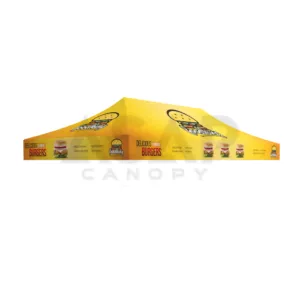
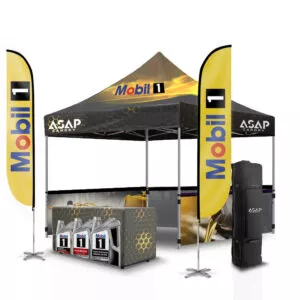


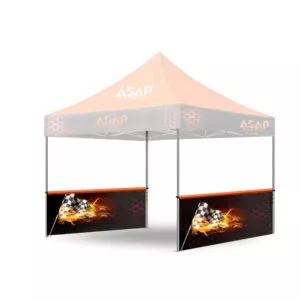
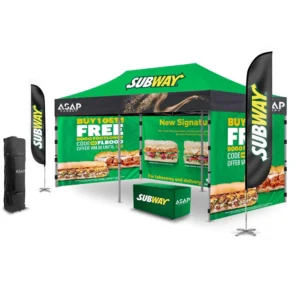

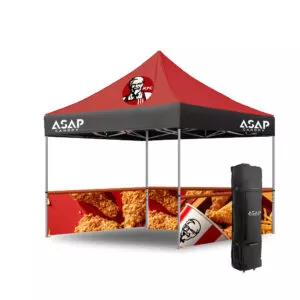
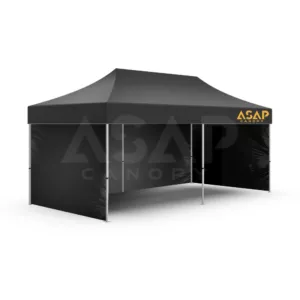



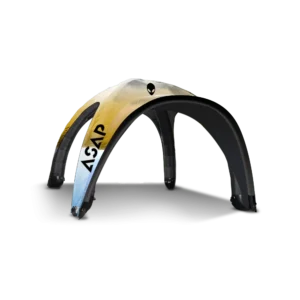

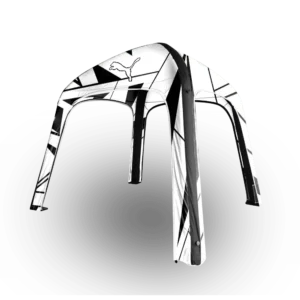



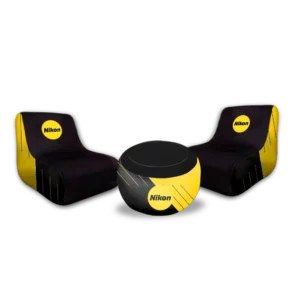




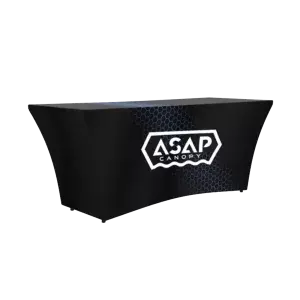

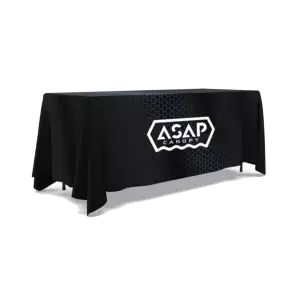





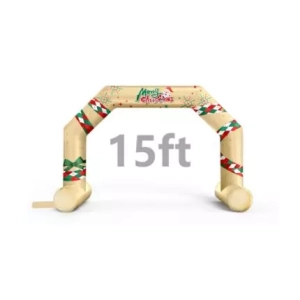





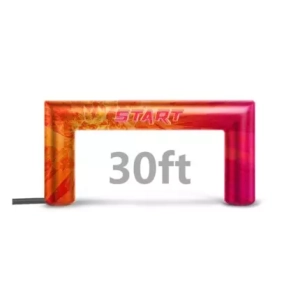





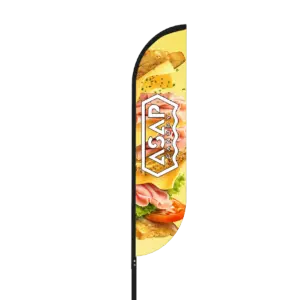


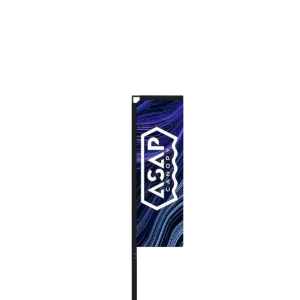

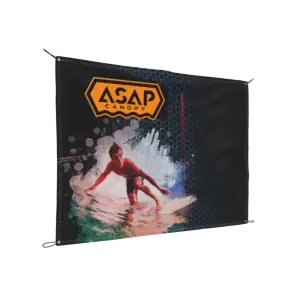
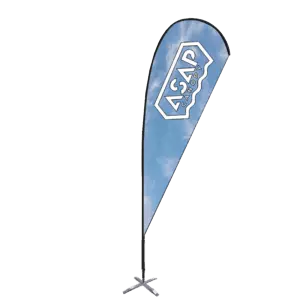

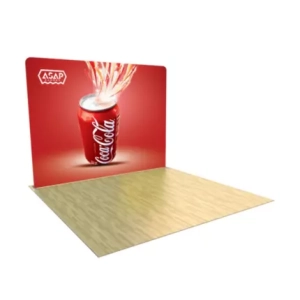

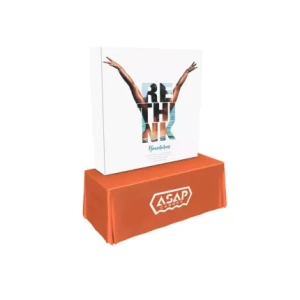
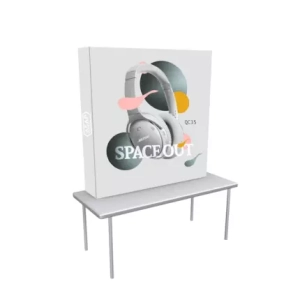
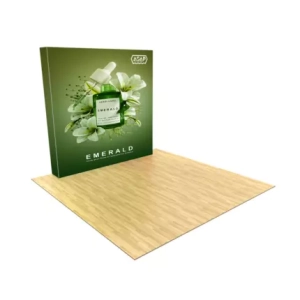


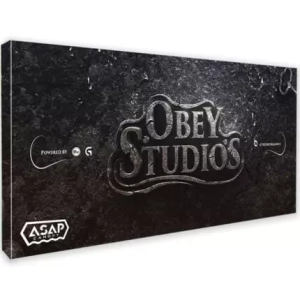
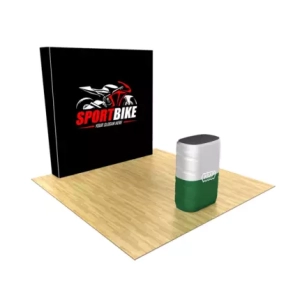



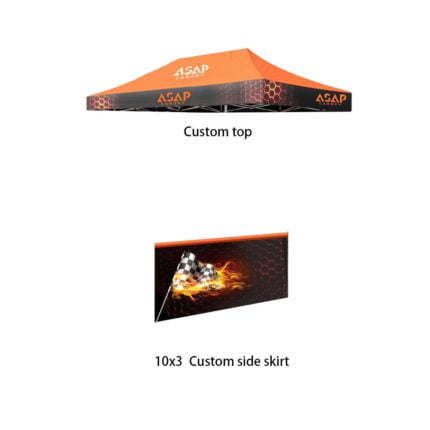



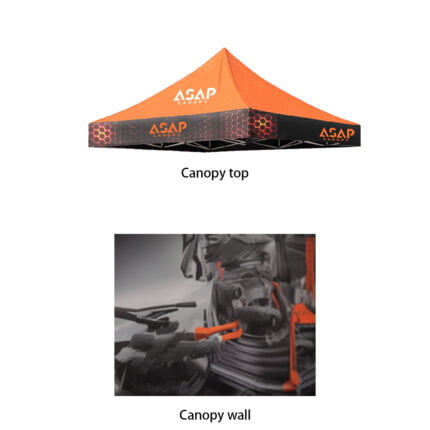


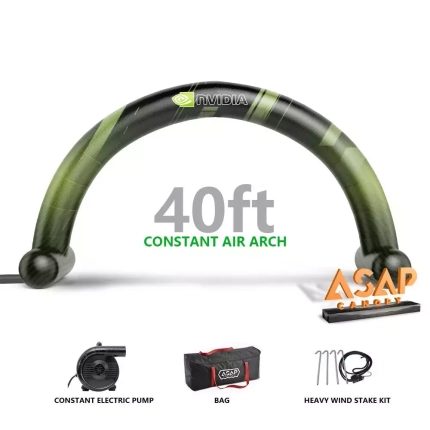

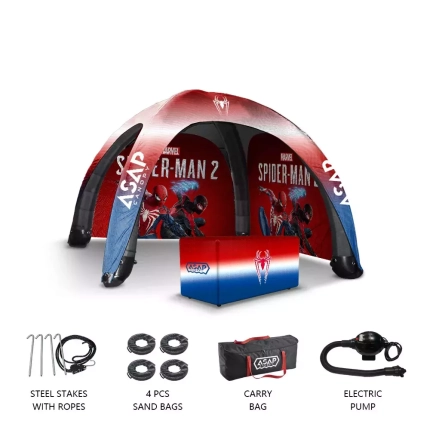





 5×5 Pop Up Tent
5×5 Pop Up Tent 6.5×6.5 Pop Up Tent
6.5×6.5 Pop Up Tent 10×10 Canopy Tent
10×10 Canopy Tent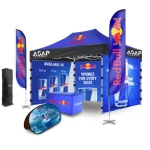 10×15 Canopy Tent
10×15 Canopy Tent 10×20 Canopy Tent
10×20 Canopy Tent Canopy Options
Canopy Options Blank Canopy Top
Blank Canopy Top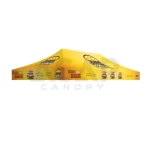 Canopy Top
Canopy Top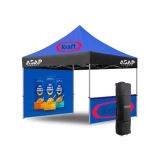 Canopy Walls
Canopy Walls Canopy Side Skirt
Canopy Side Skirt Blank Canopy
Blank Canopy Blank Canopy Kit
Blank Canopy Kit
 Inflatable Canopy Tents 10×10
Inflatable Canopy Tents 10×10 Inflatable Canopy Tents 13×13
Inflatable Canopy Tents 13×13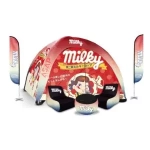 Inflatable Canopy Tents 16×16
Inflatable Canopy Tents 16×16 Inflatable Canopy Tents 20×20
Inflatable Canopy Tents 20×20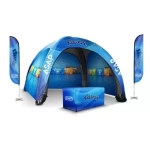 Inflatable Canopy Tents 23×23
Inflatable Canopy Tents 23×23 Inflatable Canopy Tents 26×26
Inflatable Canopy Tents 26×26 Inflatable Spider Tents
Inflatable Spider Tents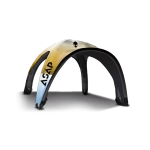 Inflatable Dome Tents
Inflatable Dome Tents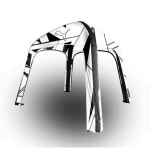 Inflatable Eclipse Tents
Inflatable Eclipse Tents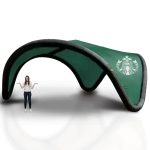 Inflatable Party Tent
Inflatable Party Tent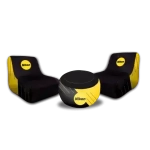 Inflatable Furniture
Inflatable Furniture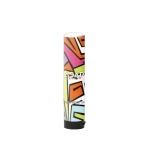 Inflatable Pillar
Inflatable Pillar
 Single Pole Star Tents
Single Pole Star Tents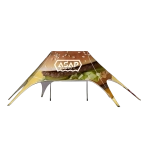 Double Pole Star Tents
Double Pole Star Tents
 15FT Inflatable Arches
15FT Inflatable Arches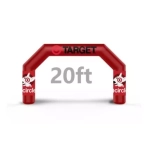 20FT Inflatable Arches
20FT Inflatable Arches 25FT Inflatable Arches
25FT Inflatable Arches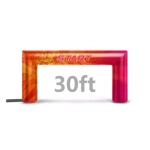 30FT Inflatable Arches
30FT Inflatable Arches 40FT Inflatable Arches
40FT Inflatable Arches 50FT Inflatable Arches
50FT Inflatable Arches Custom Constant Arches
Custom Constant Arches Custom Sealed Arches
Custom Sealed Arches
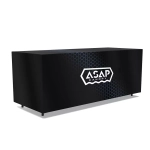 Fitted Table Covers
Fitted Table Covers Stretch-Fit Table Covers
Stretch-Fit Table Covers Loose Table Throws
Loose Table Throws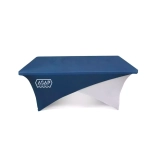 Cross-Over Stretch-Fit Table Cover
Cross-Over Stretch-Fit Table Cover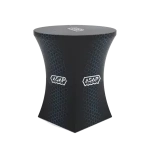 Round Stretch-Fit Table Cover
Round Stretch-Fit Table Cover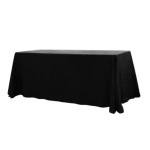 Blank Table Throws
Blank Table Throws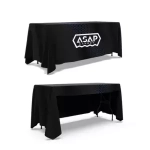 3-Sided Loose Table Throw
3-Sided Loose Table Throw Round Fitted Table Covers
Round Fitted Table Covers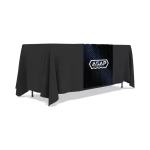 Table Runners
Table Runners Square Table Covers
Square Table Covers
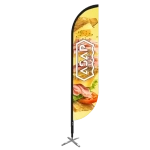 Feather Flags
Feather Flags Blade Flags
Blade Flags Feather Banner
Feather Banner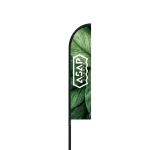 Blade Banner
Blade Banner Teardrop Flags
Teardrop Flags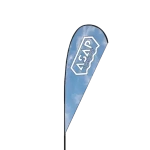 Teardrop Banner
Teardrop Banner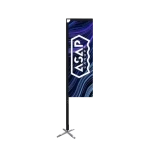 Rectangle Flags
Rectangle Flags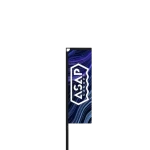 Rectangle Banner
Rectangle Banner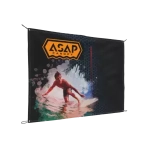 Mesh Event Banners
Mesh Event Banners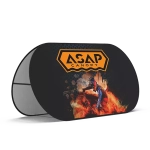 Pop Out Banner Horizontal
Pop Out Banner Horizontal Pop-Out Banner Vertical
Pop-Out Banner Vertical
 Trade Show Display
Trade Show Display Trade Show Display Kit
Trade Show Display Kit Pop Up Trade Show Display
Pop Up Trade Show Display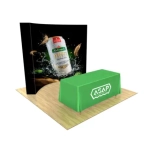 Pop Up Trade Show Display Deluxe Kit
Pop Up Trade Show Display Deluxe Kit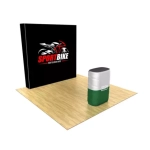 Pop Up Trade Show Display Kit
Pop Up Trade Show Display Kit TableTop Displays Kit
TableTop Displays Kit Pop Up Tabletop Display Kit
Pop Up Tabletop Display Kit Pop Up Tabletop Display
Pop Up Tabletop Display Tabletop Display
Tabletop Display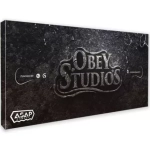 Straight Trade Show Exhibit Booth
Straight Trade Show Exhibit Booth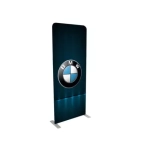 Banner Stand
Banner Stand
 Tent Accessories
Tent Accessories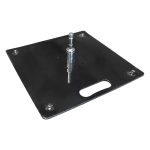 Flag Accessories
Flag Accessories Arch Accessories
Arch Accessories Trade Show Accessories
Trade Show Accessories
